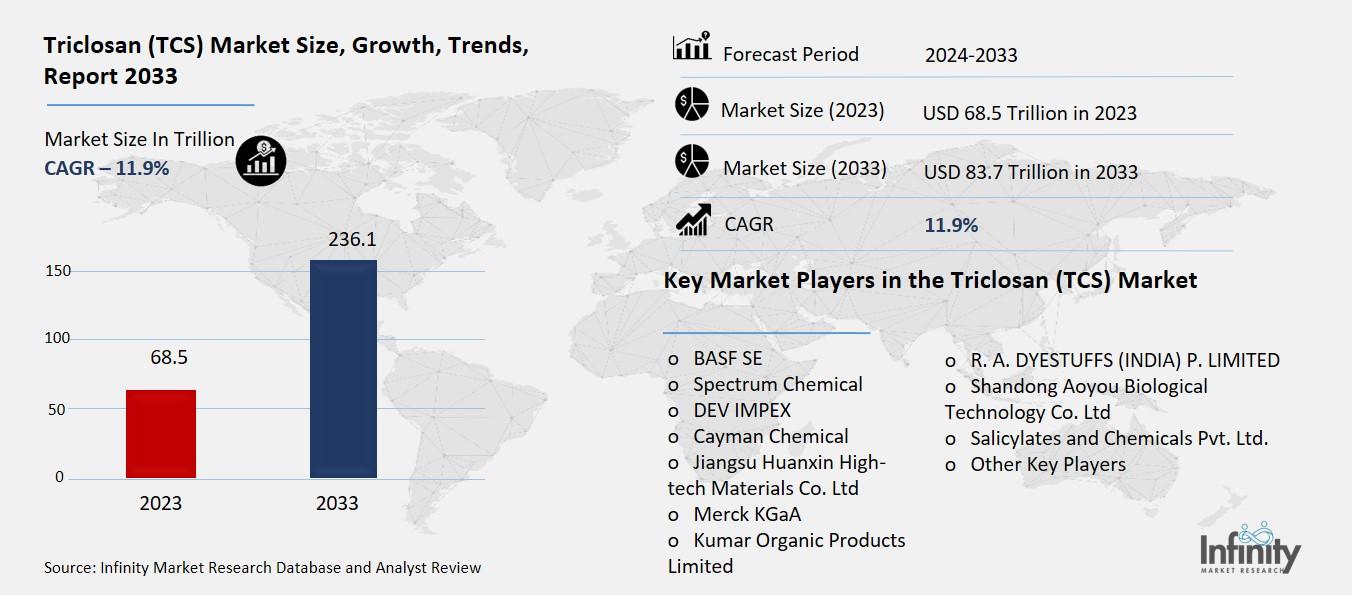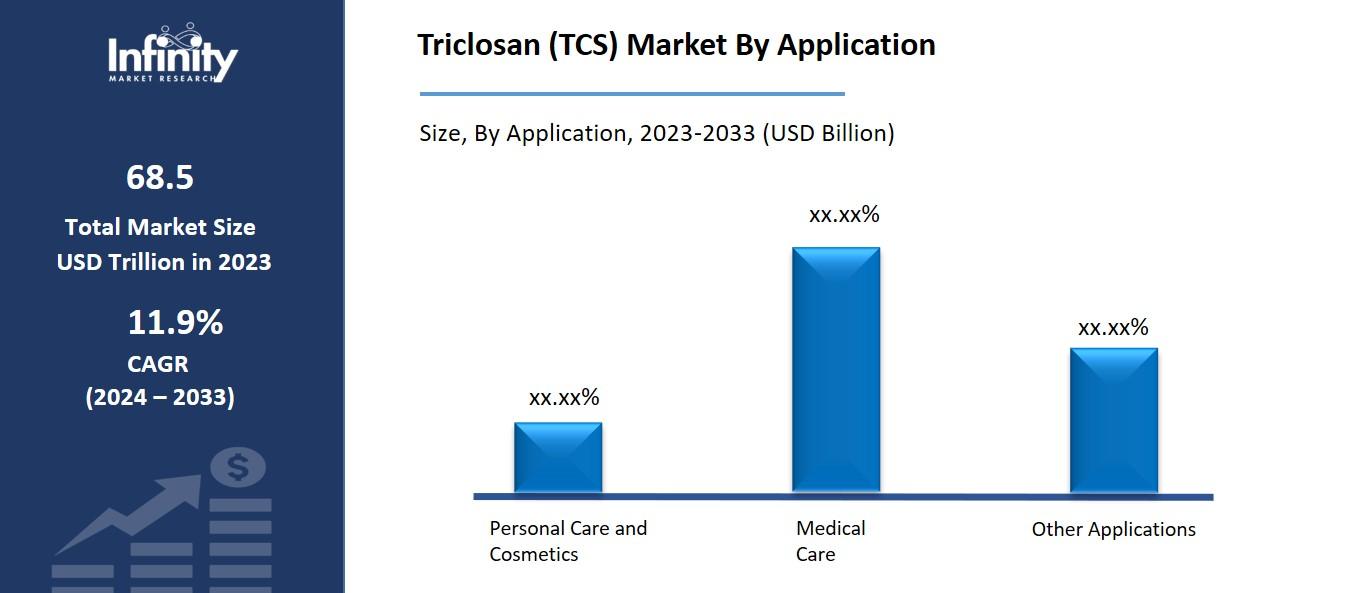
🔐 Secure Payment Guaranteed
Safe checkout with trusted global payment methods.
🌟 Why Choose Infinity Market Research?
At Infinity Market Research, we dont just deliver data — we deliver clarity, confidence, and competitive edge.
In a world driven by insights, we help businesses unlock the infinite potential of informed decisions.
Here why global brands, startups, and decision-makers choose us:
Industry-Centric Expertise
With deep domain knowledge across sectors — from healthcare and technology to manufacturing and consumer goods — our team delivers insights that matter.
Custom Research, Not Cookie-Cutter Reports
Every business is unique, and so are its challenges. Thats why we tailor our research to your specific goals, offering solutions that are actionable, relevant, and reliable.
Data You Can Trust
Our research methodology is rigorous, transparent, and validated at every step. We believe in delivering not just numbers, but numbers that drive real impact.
Client-Centric Approach
Your success is our priority. From first contact to final delivery, our team is responsive, collaborative, and committed to your goals — because you re more than a client; you re a partner.
Recent Reports
Hyaluronic Acid-based Dermal Fillers Market Report
Dermal Fillers Market Report
Triclosan (TCS) Market
Global Triclosan (TCS) Market (By Type, Purity 98% and Purity 99%; By Application, Personal Care and Cosmetics, Medical Care, and Other Applications; By Region and Companies), 2024-2033
Dec 2024
Automobiles
Pages: 138
ID: IMR1375
Triclosan (TCS) Market Overview
Global Triclosan (TCS) Market acquired the significant revenue of 68.5 Million in 2023 and expected to be worth around USD 236.1 Million by 2033 with the CAGR of 11.9% during the forecast period of 2024 to 2033. The scope of this research encompasses the triclosan (TCS) market concerning the production and sale of an antibacterial and antifungal chemical compound used for applications in the personal care products, healthcare, and industries. TCS is mainly applied in products such as toothpaste, soaps, hand sanitizers and medical devices due to the antimicrobial feature.

However, rising regulation because of possible adverse effects on the environment and human health has affected market-specific trends and various countries have even imposed limitations, or even a complete ban on the use of the chemical in particular products. However, it remains demand in a few areas such as in health sector and industrial washing where cleanliness is of paramount importance. Market growth is also determined by occurrences towards different alternatives and innovations of safe sustainable antimicrobial agents.
Drivers for the Triclosan (TCS) Market
Rising Hygiene Awareness
Due to busy lifestyles and increase in diseases, people have become more conscious about personal hygiene; thus, there has been a rise in the use of antibacterial products in personal care and healthcare industries. COVID19 can be said to have acted as a turning point since it informed the world focused more on sanitation and infection control. Consequently, practices such as washing with anti-bacterial soap, use of hand sanities, and disinfection of surfaces and objects has become normative not only within households and household like establishment but also within health care organizations. This sector has continued to come up with better formulas that contain inputs that can fight bacterial such as those that are required during the normal everyday practices. In the same way, a number of industries of healthcare products have further develop their usage of antimicrobial products to uphold strict measures in sanitation, especially among health care centers, hospitals and homes for the elderly.
Restraints for the Triclosan (TCS) Market
Shift Toward Safer Alternatives
The market is increasingly shifting toward natural and eco-friendly antimicrobial agents, driven by growing consumer awareness of health and environmental sustainability. Synthetic antimicrobial agents like triclosan are facing scrutiny due to potential health risks, such as hormone disruption, and their negative impact on ecosystems, particularly aquatic life. In response, manufacturers are developing bio-based alternatives derived from natural sources like plant extracts, essential oils, and organic acids. These alternatives are perceived as safer for both human use and the environment, aligning with global trends toward cleaner, greener products. Regulatory support for sustainable solutions, coupled with the rising demand for transparency in ingredient sourcing and eco-label certifications, further accelerates this shift.
Opportunity in the Triclosan (TCS) Market
R&D in Safer Antimicrobials
The development of triclosan-based derivatives aims to mitigate environmental concerns associated with triclosan (TCS), such as its persistence and potential to disrupt ecosystems. Researchers are exploring chemical modifications to TCS's structure to reduce its environmental footprint while retaining antimicrobial efficacy. These efforts focus on enhancing biodegradability and minimizing bioaccumulation, thereby lessening adverse ecological impacts. For instance, studies have investigated the formation of less harmful by-products during degradation processes to prevent environmental persistence.
In parallel, innovations in combined antimicrobial agents are being pursued to achieve broader and more effective antimicrobial action. By formulating synergistic combinations of different antimicrobial substances, it's possible to enhance overall efficacy and reduce the likelihood of resistance development.
Trends for the Triclosan (TCS) Market
Integration with IoT and Advanced Technologies
Triclosan's antimicrobial properties make it a valuable additive in coatings for smart devices and medical tools. These coatings help prevent microbial growth on surfaces that frequently come into contact with human skin or bodily fluids. For smart devices, triclosan is incorporated into touchscreens, cases, and accessories to enhance hygiene, particularly in environments where device-sharing is common, such as healthcare facilities and public settings. In medical tools and equipment, triclosan coatings play a critical role in reducing the risk of hospital-acquired infections (HAIs), maintaining sterile conditions, and extending the functional lifespan of medical instruments. This application is particularly significant as healthcare systems globally strive to improve infection control standards.
Nanotechnology is transforming the application efficiency of antimicrobial agents like triclosan. By embedding triclosan within nanoscale carriers, such as nanoparticles or nanofibers, its delivery can be precisely targeted to achieve prolonged and controlled release. This ensures sustained antimicrobial activity while minimizing the required dosage, thereby reducing environmental and health risks associated with overuse.
Segments Covered in the Report
By Type
o Purity 98%
o Purity 99%
By Application
o Personal Care and Cosmetics
o Medical Care
o Other Applications
Segment Analysis
By Type Analysis
On the basis of type, the market is divided into purity 98% and purity 99%. Among these, purity 98% segment acquired the significant share in the market owing to its cost-effectiveness, making it widely used in various commercial applications. Products with this purity level are commonly utilized in personal care items and cosmetics, where high purity is essential for effective performance. In contrast, triclosan with a purity level of ≥99% is predominantly used in sensitive applications such as medical devices, pharmaceuticals, and high-end personal care products, where the highest standards of purity and efficacy are paramount.
By Application Analysis
On the basis of application, the market is divided into personal care and cosmetics, medical care, and other applications. Among these, personal care and cosmetics segment held the prominent share of the market. This is attributed to triclosan's widespread use as an antibacterial agent in products like soaps, deodorants, and toothpaste, where its efficacy in inhibiting bacterial growth is highly valued. The healthcare segment also utilizes triclosan in medical devices and surgical scrubs; however, its market share is comparatively smaller due to stringent regulations and a growing shift toward alternative antimicrobial agents.

Regional Analysis
North America Dominated the Market with the Highest Revenue Share
North America held the most of the share of 30.1% of the market due to the region's advanced healthcare infrastructure and high demand for personal care and hygiene products. The widespread use of triclosan in soaps, hand sanitizers, and toothpaste, driven by consumer awareness of hygiene, has significantly contributed to market growth.
Additionally, the region's robust regulatory frameworks ensure the safe application of triclosan, particularly in medical and industrial sectors. The healthcare industry's emphasis on infection control and the rising prevalence of hospital-acquired infections (HAIs) further amplify demand. Moreover, North America's strong research and development ecosystem supports the innovation of triclosan-based derivatives and sustainable alternatives, sustaining its market leadership.
Competitive Analysis
The competitive landscape of the triclosan market is shaped by key players focusing on innovation, regulatory compliance, and product diversification. Major companies are investing in research and development to create triclosan-based derivatives that have a reduced environmental impact, addressing growing concerns about its sustainability. As regulatory pressures increase, especially regarding environmental and health concerns, companies are exploring alternatives, such as natural antimicrobial agents and eco-friendly formulations, to maintain market share. Additionally, the market is witnessing strategic partnerships and collaborations, particularly in the healthcare and personal care sectors, to develop cutting-edge antimicrobial solutions.
Key Market Players in the Triclosan (TCS) Market
o BASF SE
o Spectrum Chemical
o DEV IMPEX
o Cayman Chemical
o Jiangsu Huanxin High-tech Materials Co. Ltd
o Merck KGaA
o Kumar Organic Products Limited
o R. A. DYESTUFFS (INDIA) P. LIMITED
o Shandong Aoyou Biological Technology Co. Ltd
o Salicylates and Chemicals Pvt. Ltd.
o Other Key Players
|
Report Features |
Description |
|
Market Size 2023 |
USD 68.5 Million |
|
Market Size 2033 |
USD 236.1 Million |
|
Compound Annual Growth Rate (CAGR) |
11.9% (2023-2033) |
|
Base Year |
2023 |
|
Market Forecast Period |
2024-2033 |
|
Historical Data |
2019-2022 |
|
Market Forecast Units |
Value (USD Million) |
|
Report Coverage |
Revenue Forecast, Market Competitive Landscape, Growth Factors, and Trends |
|
Segments Covered |
By Type, Application, and Region |
|
Geographies Covered |
North America, Europe, Asia Pacific, and the Rest of the World |
|
Countries Covered |
The U.S., Canada, Germany, France, U.K, Italy, Spain, China, Japan, India, Australia, South Korea, and Brazil |
|
Key Companies Profiled |
BASF SE, Spectrum Chemical, DEV IMPEX, Cayman Chemical, Jiangsu Huanxin High-tech Materials Co. Ltd, Merck KGaA, Kumar Organic Products Limited, R. A. DYESTUFFS (INDIA) P. LIMITED, Shandong Aoyou Biological Technology Co. Ltd, Salicylates and Chemicals Pvt. Ltd., and Other Key Players. |
|
Key Market Opportunities |
R&D in Safer Antimicrobials |
|
Key Market Dynamics |
Rising Hygiene Awareness |
📘 Frequently Asked Questions
1. Who are the key players in the Triclosan (TCS) Market?
Answer: BASF SE, Spectrum Chemical, DEV IMPEX, Cayman Chemical, Jiangsu Huanxin High-tech Materials Co. Ltd, Merck KGaA, Kumar Organic Products Limited, R. A. DYESTUFFS (INDIA) P. LIMITED, Shandong Aoyou Biological Technology Co. Ltd, Salicylates and Chemicals Pvt. Ltd., and Other Key Players.
2. How much is the Triclosan (TCS) Market in 2023?
Answer: The Triclosan (TCS) Market size was valued at USD 68.5 Billion in 2023.
3. What would be the forecast period in the Triclosan (TCS) Market?
Answer: The forecast period in the Triclosan (TCS) Market report is 2024-2033.
4. What is the growth rate of the Triclosan (TCS) Market?
Answer: Triclosan (TCS) Market is growing at a CAGR of 11.9% during the forecast period, from 2024 to 2033.


🔐 Secure Payment Guaranteed
Safe checkout with trusted global payment methods.
🌟 Why Choose Infinity Market Research?
- Accurate & Verified Data:Our insights are trusted by global brands and Fortune 500 companies.
- Complete Transparency:No hidden fees, locked content, or misleading claims — ever.
- 24/7 Analyst Support:Our expert team is always available to help you make smarter decisions.
- Instant Savings:Enjoy a flat $1000 OFF on every report.
- Fast & Reliable Delivery:Get your report delivered within 5 working days, guaranteed.
- Tailored Insights:Customized research that fits your industry and specific goals.
📄 Available License Types




